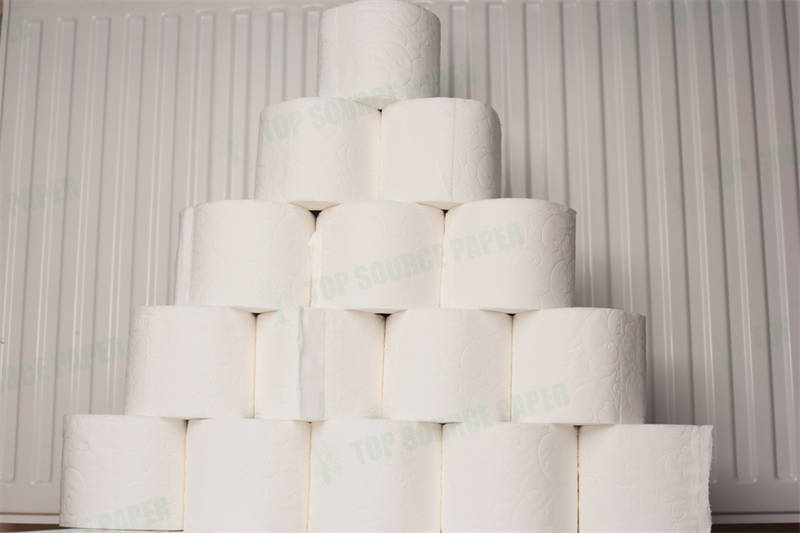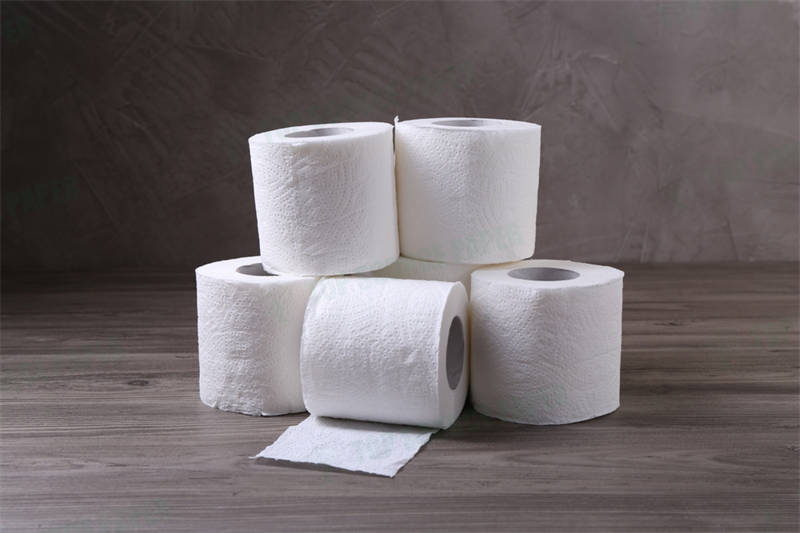Are トイレットペーパー price fluctuations leaving your business vulnerable? Skyrocketing raw material costs and unpredictable consumer demand can turn inventory management into a real headache for retailers and wholesalers. Staying ahead requires understanding the underlying factors driving these shifts.
This analysis dives into the key drivers behind toilet paper price trends, from pulp prices to evolving consumer behaviors. Drawing on insights from Top Source Paper, a leading manufacturer known for its customizable OEM and ODM services, we’ll uncover practical strategies to stabilize costs and secure your supply chain in this volatile market.
Proven Factors Driving Toilet Paper Price Trends in 2024
Toilet paper: it’s a staple in every household, but have you ever stopped to consider what drives those toilet paper price trends? The price you pay at the store isn’t just a random number. It’s the result of a complex interplay of factors, from the cost of raw materials to global supply chain dynamics. Understanding these elements can help you make informed purchasing decisions and potentially save money.
Understanding toilet paper price drivers allows small businesses to optimize their purchasing strategy, balancing cost and quality effectively.
Raw Material Costs: How Pulp and Bamboo Prices Shape Production Expenses
The biggest influence on toilet paper prices is the cost of raw materials. Wood pulp, the traditional material, is subject to market fluctuations based on forestry practices, environmental regulations, and global demand. Bamboo, an increasingly popular alternative, also experiences price shifts depending on harvest yields and demand. Top Source Paper cleverly uses both 100% virgin wood pulp and bamboo options, which allows wholesalers to anticipate cost shifts.
Supply Chain Disruptions: Logistics Challenges and Environmental Regulations
Getting toilet paper from the factory to your bathroom involves a complex supply chain. Disruptions such as shipping delays, port congestion, and increased transportation costs can all inflate prices. Environmental regulations also play a role. Stricter rules on deforestation and manufacturing processes can increase production costs, which are then passed on to the consumer. I have over 10 years of experience in the toilet paper industry and I have seen so much change!
Consumer Demand Spikes: Health Awareness and Economic Uncertainty Effects
We all remember the great toilet paper shortage of 2020! Sudden spikes in demand, often triggered by health crises or economic uncertainty, can lead to temporary price increases. When everyone is stocking up, retailers often raise prices due to limited supply. This is something Top Source Paper keeps an eye on in order to help clients stay ahead of the market. The company works hard to make our clients feel like family.
Sustainability Trends: The Rise of Eco-Friendly Toilet Paper Options
More consumers are choosing eco-friendly options like recycled toilet paper or bamboo-based products. These sustainable alternatives often come with a higher price tag due to specialized manufacturing processes and sourcing of materials. However, as demand for these products grows, production costs may decrease, leading to more competitive toilet paper price fluctuations.
Impact of Manufacturing Processes and Technology
The technology used in manufacturing toilet paper also influences its price. Advanced machinery and efficient production processes can reduce costs. Companies that invest in these technologies can often offer more competitive prices. Investing in proper tech is imperative in keeping costs down and affordability high!
Packaging and Branding Strategies Affect Toilet Paper Pricing Analysis
Fancy packaging and well-known brands often come with a premium price. Companies invest heavily in marketing and branding, which can impact the final cost of the product. Generic or store-brand トイレットペーパー usually offers a more affordable alternative.
Government Policies and Tariffs
Trade policies and tariffs can significantly affect the price of imported toilet paper. Changes in these policies can lead to price fluctuations, especially for products sourced from overseas. Top Source Paper can help partners navigate these tricky waters!
Currency Exchange Rates and Global Economics
Currency exchange rates play a crucial role in the cost of imported raw materials and finished products. Fluctuations in exchange rates can impact the price of toilet paper, particularly in countries that rely on imports. The global economy can also influence トイレットペーパー pricing, with economic downturns often leading to lower prices due to decreased demand. This can be a real “sticky wicket!”
Retailer Markups and Competition
The final price you pay is also influenced by retailer markups and the level of competition in the market. Retailers add a percentage to the wholesale cost to cover their operating expenses and generate profit. In highly competitive markets, retailers may lower their markups to attract customers, resulting in lower prices for consumers.
Toilet Paper Pricing: Top Source Paper Can Help
Understanding the various factors that influence toilet paper prices empowers you to make informed purchasing decisions. By considering raw material costs, supply chain dynamics, consumer demand, and sustainability trends, you can better anticipate price changes and find the best value for your money. Top Source Paper, located in China’s largest paper production base, is committed to providing high-quality, customized solutions to meet your needs, ensuring you get the best possible price without compromising on quality. The company’s primary goal is to attract potential wholesale partners and build their brand and increase profits by providing quality products and services.
Toilet Paper Price Factors: A Detailed Breakdown
| Factor | Impact on Price | Example | Mitigation Strategy | Top Source Paper Advantage |
|---|---|---|---|---|
| Raw Material Costs | 高い | Pulp prices increase due to deforestation regulations | Diversify raw material sources | Offers both virgin wood pulp and bamboo options |
| Supply Chain Disruptions | 中くらい | Shipping delays due to port congestion | Optimize logistics and inventory management | Efficient production and strategic location |
| Consumer Demand Spikes | 高い | Increased demand during a health crisis | Maintain sufficient inventory levels | Agile production to meet demand fluctuations |
| Sustainability Trends | Medium to High | Higher cost of recycled materials | Explore cost-effective eco-friendly options | Provides sustainable bamboo-based products |
| Retailer Markups | 中くらい | High markups in low-competition markets | Negotiate favorable terms with retailers | Competitive wholesale pricing |
Decoding Historical Trends and Market Fluctuations in Toilet Paper Pricing
Understanding toilet paper price trends requires a look back at historical data and market events. By analyzing past fluctuations and identifying key factors, businesses can better predict future shifts and plan their inventory more effectively. This article delves into the historical pricing data and market events to contextualize current trends. Being in the international trade business with toilet paper for over 10 years, I’ve seen the ups and downs!
Analyzing historical toilet paper prices reveals patterns and helps businesses prepare for market volatility, optimizing procurement strategies.
Past Shortage Events: Lessons from Demand Surges and Price Spikes
The COVID-19 pandemic triggered unprecedented demand surges, leading to significant price spikes. This event highlighted the vulnerability of the supply chain and the impact of panic buying on consumer behavior. Analyzing the causes and consequences of past shortages provides valuable lessons for managing future crises. These shortages were definitely a pain in the neck!
Pricing Evolution: Comparing Costs Across Decades and Regions
Comparing toilet paper costs across different decades and regions reveals interesting patterns. Factors such as inflation, changes in manufacturing technology, and regional differences in raw material costs all contribute to pricing evolution. Understanding these long-term trends provides a broader perspective on current toilet paper price trends.
Consumer Behavior Shifts: Impact of Health Consciousness on Market Dynamics
Increasing health consciousness and awareness of hygiene practices have led to shifts in consumer buying behaviors. Demand for premium, eco-friendly, and specialized トイレットペーパー products has grown, influencing market dynamics and pricing strategies. Consumers are now looking for products that not only meet their needs but also align with their values.
Market Forecasts: Insights into 2025-2034 Pricing Projections
Market forecasts provide insights into potential pricing scenarios for the next decade. These projections consider factors such as economic growth, changes in consumer preferences, and technological advancements. While forecasts are not always accurate, they can help businesses prepare for potential market shifts.
Impact of Economic Recessions on Toilet Paper Pricing
Economic recessions typically lead to decreased consumer spending, which can impact toilet paper pricing. During economic downturns, consumers may switch to cheaper alternatives or reduce their overall consumption. Understanding these patterns can help businesses adjust their pricing strategies accordingly.
The Role of Innovation in Toilet Paper Manufacturing
Innovations in トイレットペーパー製造, such as the use of alternative raw materials and more efficient production processes, can impact pricing. Companies that invest in innovation may be able to offer more competitive prices while maintaining quality.
Influence of Raw Material Availability on Pricing
The availability of raw materials, such as wood pulp and bamboo, plays a crucial role in toilet paper pricing. Shortages or disruptions in the supply of these materials can lead to price increases. Securing a reliable supply of raw materials is essential for maintaining stable pricing.
Sustainability Certifications and Their Impact on Price
Sustainability certifications, such as FSC and PEFC, can influence the price of トイレットペーパー. Products with these certifications often command a premium price due to the higher costs associated with sustainable sourcing and manufacturing practices. This makes Top Source Paper a great choice because of its commitment to environmentally friendly hygiene products.
Toilet Paper Market Trends: Top Source Paper’s Edge
Top Source Paper leverages its extensive production capacity (200 containers/month) and rigorous quality assurance processes to stabilize supply for wholesalers during unpredictable market swings. By understanding historical trends and anticipating future shifts, Top Source Paper helps its partners navigate the complexities of the toilet paper market and maintain a competitive edge. Top Source Paper is committed to providing quality and environmentally friendly hygiene products to every customer. Top Source Paper’s customized toilet tissue are not only high-end, but also fashionable and of high quality, This puts us at ease while making us feel professional and effcient! We aim to provide efficient production, quality assurance, and competitive prices.
Historical Toilet Paper Price Data and Influencing Factors
| Year | Average Price per Roll (USD) | Key Influencing Factor | Consumer Buying Behaviors | Market Event |
|---|---|---|---|---|
| 2014 | 0.75 | Stable raw material costs | Price-sensitive purchasing | Economic stability |
| 2017 | 0.85 | Increased demand for premium brands | Growing preference for softness and thickness | Introduction of new manufacturing technologies |
| 2020 | 1.50 | COVID-19 pandemic and panic buying | Stockpiling and limited availability | Global pandemic and supply chain disruptions |
| 2022 | 1.20 | Easing of supply chain constraints | Shift back to normal purchasing patterns | End of pandemic-related lockdowns |
| 2024 | 1.30 | Inflation and increased production costs | Increased demand for sustainable options | Focus on eco-friendly products |
Smart Savings Strategies for Navigating Toilet Paper Price Volatility
In a market where toilet paper price trends can fluctuate wildly, retailers and wholesalers need to be proactive. By implementing smart savings strategies, you can optimize procurement, reduce costs, and mitigate the risk of shortages. This article provides actionable strategies to navigate the volatile toilet paper market. Having been in the international trade business for over 10 years, I can help!
Proactive procurement and strategic partnerships help businesses minimize the impact of toilet paper price volatility.
Bulk Buying Benefits: Securing Discounts Through Large-Scale Orders
One of the most effective ways to save money on toilet paper is through bulk buying. By placing large-scale orders, retailers and wholesalers can often secure significant discounts from suppliers. This strategy allows you to take advantage of economies of scale and reduce your overall cost per unit. Top Source Paper can easily fulfill large orders!
Strategic Stockpiling: Using Forecasts to Avoid Shortages
Strategic stockpiling involves using market forecasts to anticipate potential shortages and price hikes. By building up your inventory during periods of low prices, you can avoid being caught short when demand surges. This strategy requires careful planning and accurate forecasting, but it can provide a significant buffer against market volatility.
Customization Advantages: Tailoring Specs to Balance Cost and Quality
Customizing your toilet paper specifications can also help you balance cost and quality. By adjusting factors such as roll size, ply count, and paper type, you can find the optimal balance between price and performance. This approach allows you to offer a product that meets your customers’ needs without breaking the bank.
Partnering with Reliable Suppliers: Quality Control and Lead Time Flexibility
Partnering with reliable suppliers is crucial for managing toilet paper price trends and mitigating shortage risks. A trustworthy supplier will provide consistent quality, competitive pricing, and flexible lead times. This partnership ensures a stable supply chain and reduces the risk of disruptions.
Negotiating Favorable Payment Terms
Negotiating favorable payment terms with your suppliers can also help you improve your cash flow and reduce your overall costs. By securing longer payment periods or early payment discounts, you can optimize your financial performance.
Exploring Alternative Sourcing Options
Exploring alternative sourcing options can provide a competitive edge. By diversifying your supplier base, you can reduce your reliance on any single source and increase your negotiating power. This strategy can also help you identify new and innovative products that offer better value.
Implementing Efficient Inventory Management Systems
Efficient inventory management systems are essential for minimizing waste and reducing storage costs. By tracking your inventory levels and optimizing your ordering processes, you can avoid overstocking and ensure that you always have the right amount of product on hand.
Analyzing Consumer Buying Behaviors to optimize purchase
Consumer buying behaviors are important in determining the best deals for toilet paper. By tracking customer purchasing trends, you can optimize you purchasing decision to get the best deals.
Optimizing TP Savings: Top Source Paper’s Role
Top Source Paper’s OEM/ODM services and competitive pricing enable businesses to buffer against price hikes and shortages through bulk orders and proactive inventory management. As a trusted supplier, Top Source Paper provides consistent quality, flexible lead times, and customized solutions to meet your specific needs. We work to make our clients feel like family. Let’s work together to expand your business and create meaningful growth worldwide!
Toilet Paper Procurement Savings: Strategies and Impact
| Strategy | Potential Savings | Implementation | Risk Mitigation | Top Source Paper Benefit |
|---|---|---|---|---|
| Bulk Buying | 5-15% | Negotiate discounts for large orders | Requires sufficient storage capacity | Competitive bulk pricing |
| Strategic Stockpiling | Up to 20% during shortages | Monitor market forecasts and build inventory | Risk of obsolescence or spoilage | Reliable supply to minimize stockpiling |
| カスタマイズ | 10-20% | Tailor specs to balance cost and quality | Requires careful specification analysis | OEM/ODM services for tailored solutions |
| Reliable Suppliers | Reduced supply chain disruptions | Partner with trustworthy suppliers | Requires due diligence and supplier evaluation | Consistent quality and flexible lead times |
| Efficient Inventory Management | 5-10% reduction in waste | Track inventory levels and optimize ordering | Requires accurate forecasting and data analysis | Stable supply to support efficient inventory |

結論
After spending over 10 years in the トイレットペーパー industry, I’ve seen firsthand how understanding toilet paper price trends can truly impact your bottom line. It’s not just about reacting to market changes, but anticipating them and making informed decisions.
From my experience at Top Source Paper, the key is to focus on quality, customization, and reliable partnerships. By leveraging our OEM/ODM services and strategic location in China’s largest paper production base, we strive to provide stability in an unpredictable market. Ultimately, it’s about building trust and delivering value that exceeds expectations.
Managing costs without sacrificing quality is a continuous journey. If you are looking to make sure you’re getting the best possible price and building a strong relationship with your supplier, reaching out would be a smart move.


